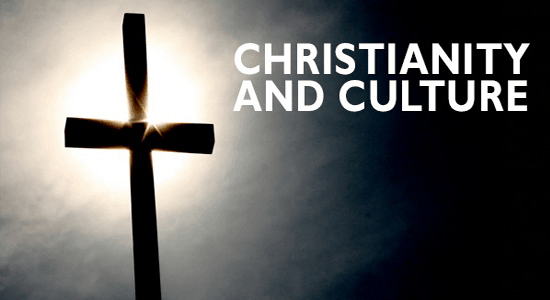
How does Christianity relate to culture? In this episode of 5 Minutes in Church History, Dr. Stephen Nichols reviews H. Richard Niebuhr’s five models for understanding this relationship.
The twentieth-century theologian H. Richard Niebuhr once put his finger on what he called “the enduring problem.” The phrase comes from his book Christ and Culture. He said,
“A many-sided debate about the relations of Christianity and civilization is being carried on in our time.”
He uses the word “civilization”; we could also just say “culture”—”the relations between Christianity and culture.”
Niebuhr goes on to say of this debate:
“Historians and theologians, statesman and churchman, Catholics and Protestants, Christians and non-Christians, participate in it. It is carried on publicly by opposing parties and privately in the conflicts of conscience. Sometimes it is concentrated on special issues such as those of the place of Christian faith in general education or of Christian ethics and the economic life. Sometimes it deals with broad questions of the church’s responsibility for social order or of the need for a new separation of Christ’s followers from the world.
The debate is as confused as it is many-sided.”

This classic text of Niebuhr, Christ and Culture, was written in 1951. The fiftieth-anniversary edition was put out in 2001, and here we are still talking about the relationship, sometimes the precarious relationship, between Christianity and culture. The nature of this relationship is what Niebuhr called “the enduring problem.”
What perhaps makes Niebuhr’s book a classic of twentieth-century theology is that Niebuhr came up with categories for understanding the relationship of the church, or the Christian, and culture. Niebuhr identifies five different models of the relationship. The first is “Christ against culture.” This, of course, is the idea that the culture is the world, in the pejorative sense that John uses “the world,” so Christ is against it and the church rejects it. The second model is “Christ of culture.” In this case, Christianity simply accommodates or accepts culture. In many ways, this is the route taken by twentieth-century liberalism: there is no real difference between the worldview and philosophy and basic belief structures of the liberal and the secularist.
Then there is “Christ above culture.” This model attempts to synthesize Christ and culture by noting that Christ is Lord of the realm of nature or culture as well as of the realm of the supernatural. Thus, the creation of culture is made possible by the grace of God. Fourth, there is “Christ and culture in paradox.” This model is similar to “Christ above culture,” but rather than seeing continuity between Christ and culture, there is a duality. Christ and culture are two entirely different worlds, yet Christians live in both at the same time, leading to contradictions and paradox. In the midst of these contradictions, Christians find grace.
The final model is “Christ the transformer of culture.” This is the view that Niebuhr endorses. In this view, we bring the truths of Christianity to bear upon the world in which we live. Heaven is our home, but it is not as if we sit around and pine away for heaven; instead, we try to bring heaven to earth. So, there’s Niebuhr and his five categories in his classic book Christ and Culture.
Stay connected with 5 Minutes in Church History by getting the weekly podcast on iTunes, SoundCloud, or via RSS. You can also subscribe to the blog via RSS and follow us on Twitter and Facebook.
(This podcast is by Ligonier Ministries. Discovered by e2 media network and our community — copyright is owned by the publisher, not e2 media network, and audio is streamed directly from their servers.)